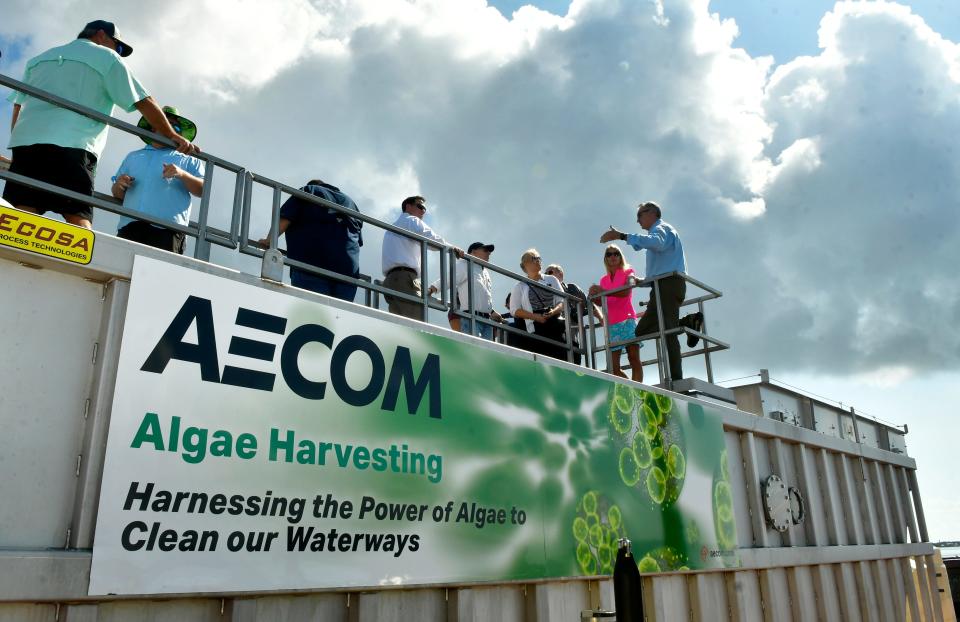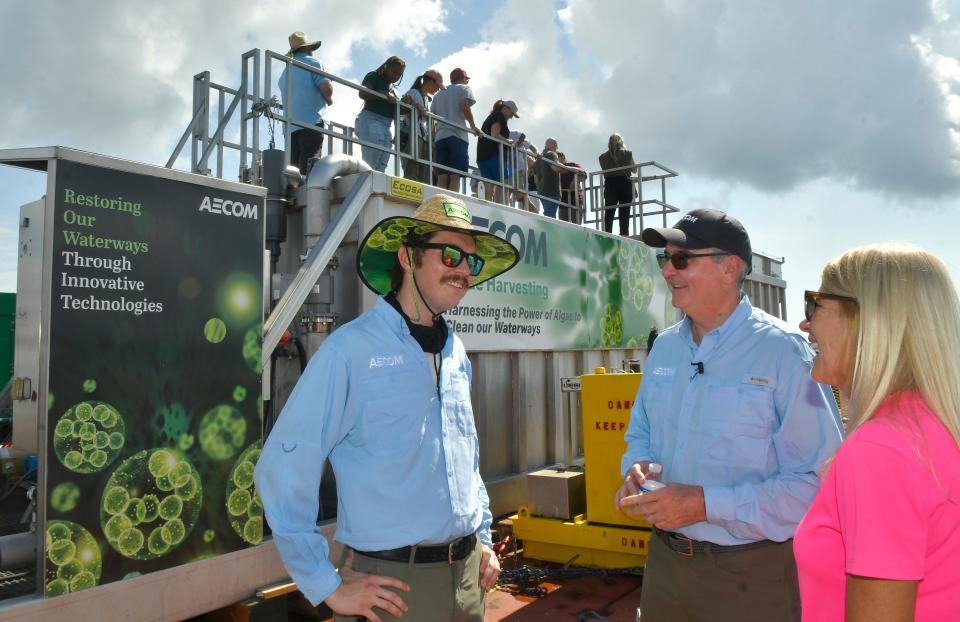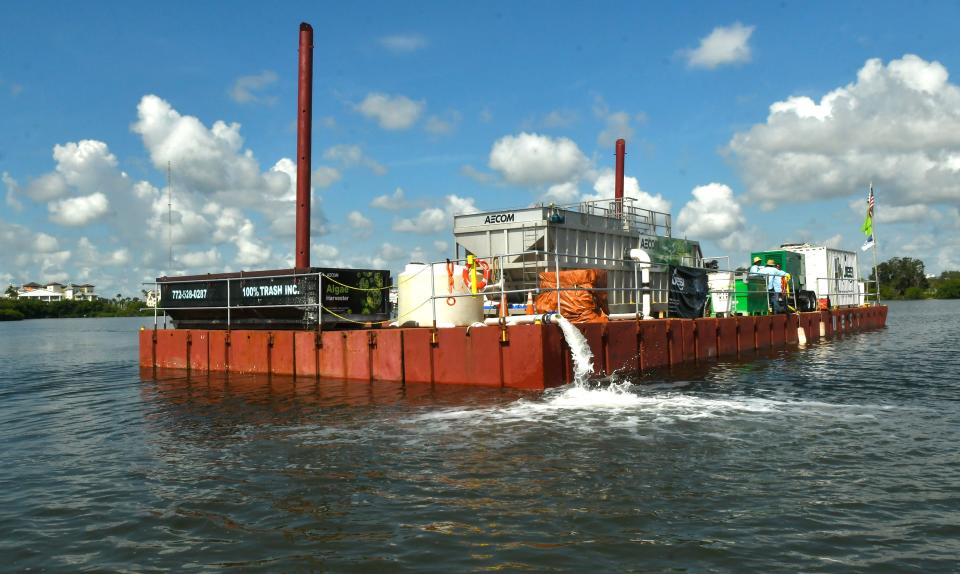Can harvesting Indian River Lagoon's algae make a healthier river, good shoes, fuel or ink?
They might just be "skimming the surface," but promoters of a novel way pulling harmful algae from the Indian River Lagoon say it's off to a good start.
"One of the biggest problems in our state and throughout our country is harmful algal blooms," Dan Levy, vice president and founder of AECOM's Algae practice, said Wednesday just before a demonstration of a $1 million project to harvest the estuary's excess algae. "We've been very effective in fresh water. Now we're advancing."
Algae produces about 70% of the Earth's oxygen through photosynthesis, but in excess can become a killer. Harvesting that excess by barge has worked in fresh water lakes, in canals and near marinas. Now AECOM's using almost $1 million in state grant money to prove their way works in our semi-salty lagoon at large.
AECOM gave tours of their lagoon pilot project Wednesday, how the process works and touted their hopes of its success. Lagoon water gets sucked into machinery on a barge anchored off Front Street Park.
The technology uses an advanced separation process involving tiny "nanobubbles" that efficiently removes algae and other suspended particles along with associated nutrients from water. The technology has been tested extensively in freshwater in Florida and New York, but not so much in brackish water, such as the Indian River Lagoon.
AECOM's barge-mounted algal harvester is poised to suck up the worst algae the lagoon has to offer, for emergency response in targeted “hot spots” to lessen harmful blooms as they happen.
In a way, it's all sort of like a roving water treatment plant.
Algae harvested from freshwater is often used to make fertilizer. But that's less likely, given the salty lagoon.
The company is looking at other possible uses for the algae from the lagoon but for now, the algae solids left behind will wind up in a landfill.

Fish and other larvae could get clumped up into the algae slurry mix, too, but AECOM officials said that would be negligible, given the size of the lagoon.
Last year, Brevard County secured a $999,000 innovative technology grant for the project from the Florida Department of Environmental Protection.
The project also promises to reduce the excess nitrogen and phosphorus from our leaky septic tanks, sewer systems and overkill fertilizing. The plan is to park the harvester at key tributaries that discharge too many nutrients to the lagoon. The harvester will be repositioned for testing multiple locations in the lagoon over a five-month period, according to the county's lagoon cleanup plan. The system will treat enough water at each location "to evaluate performance and cost-effectiveness tracked by a comprehensive monitoring program," the plan says.

"This has been a long process of trying to clean our waterways," Sen. Debbie Mayfield told the crowd of about 60 in the Front Street Park Civic Center. "These are the sort of things that we need to do."
In July, Mayfield and others gathered at the same park to tout more than $100 million in state funding this year for lagoon cleanups. That funding resulted, in part, from extreme algae blooms that began in 2011. Those blooms have killed more than half of the lagoon's seagrass, most of which hasn't recovered. The mass die-off culminated in a record total 1,101 manatees deaths in 2021, a third of which perished in Brevard, most from starvation.
Brevard plans to use its algae bloom tracking tool to help direct the barge where to go to suck up algae. The tool uses satellite imaging to map to view chlorophyll levels, one indicator of possible algae blooms, in the lagoon by specific day. That tool was developed under another DEP grant Brevard won in 2021, to development innovative technologies to address harmful algal blooms.
"We're using all of our tools to find the algae," said Terry Breeden, environmental section supervisor with Brevard's Save Our Indian River Lagoon Program.
More: Algaecides kill toxic algae blooms, but are they safe and effective long-term?
According to the company's website, a demonstration in 2019 of AECOM’s harvesting system in Lake Okeechobee showed "a viable and scalable “no harm” solution that can physically remove algae and nutrients from the water and produce an algae feedstock for transformation into biofuel." The demonstration showed greater than 85% removal of total phosphorus, total nitrogen, and chlorophyll, the company asserts.
Similar algae-harvesting efforts skimmed guacamole-like algae from waters in Martin County in 2018.

Florida must seek innovative solutions to protect a tourism economy that depends on healthy waters, AECOM officials said.
"We need clean water," Levy said. "It's not an option for us."
To learn about other Save Our Indian River Lagoon, projects visit: www.brevardfl.gov/SaveOurLagoon
This article originally appeared on Florida Today: Can harvesting Indian River Lagoon's algae help to save the estuary?

